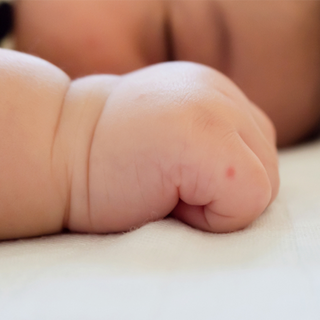
Getting prepared for your baby’s birth, both mentally and physically, is an important part of your pregnancy journey. Whether you and your doctor have discussed having a planned C-section delivery or a vaginal delivery, it’s important to have prior knowledge and to prepare one’s self in the event your obstetrician decides to deliver the baby through a C-section. So, what happens during, before and after a C-section and what are some important things you should know? Let’s find out.
What is a C-section?
A Cesarean section, commonly known as C-section, is a surgery during which an obstetrician makes incisions in a pregnant woman’s abdomen and uterus to deliver a baby. Approximately 20-25% of babies across the globe are born via C-section. As with any other surgical procedure, there are certain risks associated with a C-section but in most cases, it is a relatively uncomplicated procedure.
When is it necessary to have a C-section?
A C-section may either be a Planned/Scheduled C-section or an Emergency/Unplanned C-section. In a planned C-section, the procedure is scheduled beforehand due to reasons such as a medical condition, baby’s size/position, mother’s age, weight and so on. In most unplanned or emergency c-sections, your obstetrician might decide to deliver the baby via C-section after you’ve gone into labor due to some kind of unforeseen change or complication such as slow labor, fetal distress, problem with the placenta, amongst others.
What to expect during a C-section?
A Cesarean delivery usually takes between 45 to 60 minutes from start to end. In the case of a planned C-section, you will be advised to fast for 6 -8 hours before the surgery. In an unplanned C-section, you might have an hour or two, or even less, before the surgery begins. In either of the two scenarios, don’t hesitate to ask the medical professionals any questions or discuss any worries you have regarding the c-section procedure.
Before the C-section surgery begins, you will be prepped, your abdomen area will be cleaned and you will be hooked up with an IV and catheter. The anesthesiologist will administer a local or general anesthesia. In most cases, you will require only local anesthesia. This will be either in the form of an epidural or spinal block. This means that you will be awake through the surgery, and a screen will be placed between your upper and lower body. If you wish to see the birth of your baby, you can discuss this with your doctor beforehand. They can then put down the screen during the birth, use a transparent screen or hold up a mirror so you can actually see your child being born. Your partner can be present in the operating room if you so wish and will be asked to stay by your side during the surgery.
During your C-section, the obstetrician will normally make two horizontal incisions across your abdomen and then your uterus. In some cases, a vertical incision may also be made but it is less common. The baby is then brought out through the incisions. In certain circumstances, your OB might let you immediately hold the baby for a few minutes before baby is whisked off for a check-up. (You can discuss this with your OB when you’re making your birth plan) Your OB will then continue to stitch up your incisions. If you desire, you can request for your baby to be brought straight to the recovery room after a checkup so that you can start breastfeeding as soon as possible and establish skin-to-skin contact. All this is entirely dependent on the mother’s wishes and how she is feeling.
Recovery after a C-section
Once you move to the recovery room, you can start nursing your baby if you’re ready, unless you’ve had general anesthesia. If you feel like you need to rest or need a bit more time, don’t stress. The nurses and doctors are there to do whatever necessary to help both you and baby feel comfortable, so make the most of this time in the hospital.
After your surgery, painkillers will be administered to you and your progress will be monitored. You will most likely be allowed to eat something once you pass gas. Once your anesthesia has worn off, your nurse will encourage you to drink lots of fluids and to try and start walking, to make sure that you don’t get any blood clots. This will also help your bowel movement. Your dressing will be removed and you will be told to keep your wound clean. In most circumstances, your hospital stay will last for 3-4 days.
Caring for yourself after a C-section
In most C-sections, your body takes at least 6 weeks to fully heal after the surgery so make sure you care for yourself well in the weeks after. You will experience some common after-effects of the c-section delivery such as pain, fatigue, tenderness, nausea and vaginal bleeding. Here are a few tips you can follow to help speed up your recovery after a C-section.
- Post-surgery, you will be advised to avoid lifting anything heavier than your baby and to stay away from strenuous exercise and even intercourse for a few weeks. Light walking is usually recommended as this helps reduce the chance of any blood clots. Avoid even simple household activities for the first few days and limit walking up and down stairs. Your doctor will usually let you know when you can resume driving and other strenuous activities.
- If you have another young child at home, gently show them how to sit beside you carefully and to be mindful of your wound.
- Your medical practitioner will provide pain medication and you can discuss changing your medicine with them if needed.
- Drink lots of water through the day and place a full bottle of water by your bedside. Eat fiber-rich foods that will help make bowel movements easier.
- Ensure your wound stays clean and dry. If your wound is oozing, swollen, red and/or if you develop a fever, your pain increases, or you see excessive vaginal bleeding, speak to your medical practitioner as soon as possible as this may be signs of an infection or something else.
- Many new moms experience a range of emotions after the birth of their baby, whether it is a vaginal birth or c-section. If you feel overwhelmed by feelings of sadness, frustration, anger or hopelessness, don’t hesitate to speak to your partner and/or medical practitioner.
In addition, make sure to stock up on these postpartum essentials that you’ll probably require after a C-section.
- Maternity pads for the heavy bleeding you will experience
- Comfortable maternity bras without any underwire
- Compression stockings to reduce the chance of blood clots whilst you are relatively inactive
- Heating pads and cold compresses to soothe your wound
- High-waisted underwear that comes over your scar
- Comfortable nursing pillow to make breastfeeding easier
- Doctor-recommended laxatives if you are constipated and hemorrhoid ointment, if required
Even though the recovery period for a c-section is longer than that of a vaginal delivery, you will most likely be back to normal within a few weeks. In the meantime, don’t forget to rest as much as you can, let your body heal and enjoy bonding with your newborn.



















